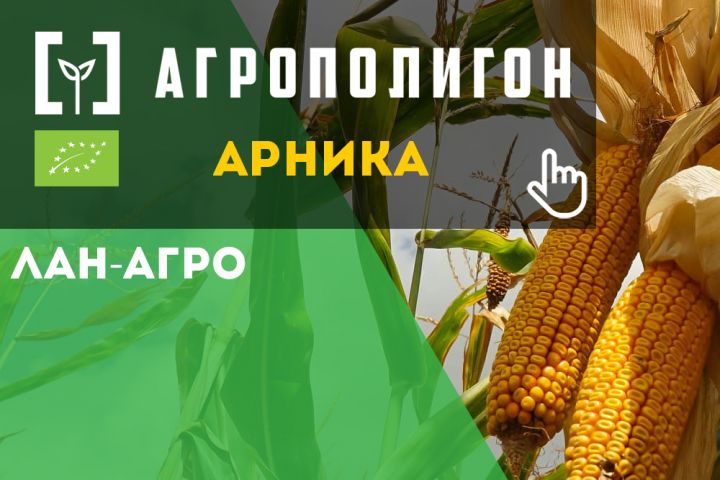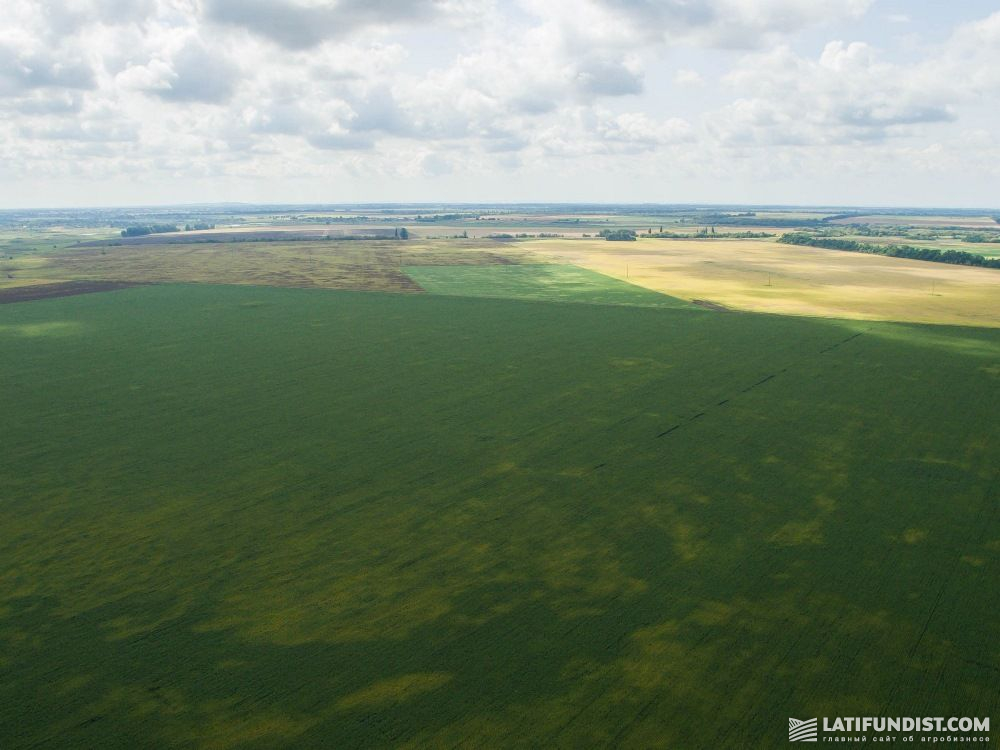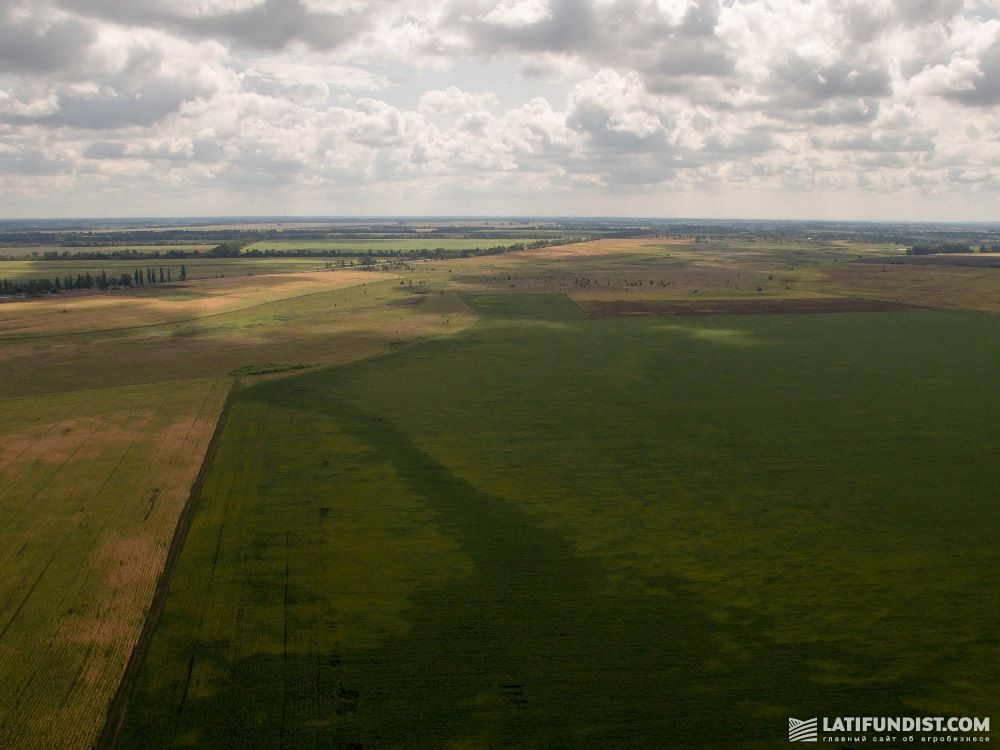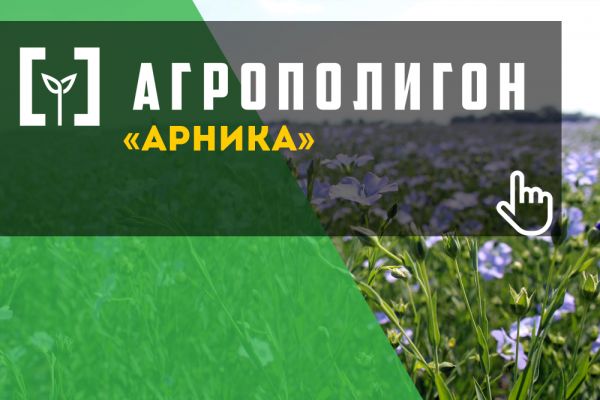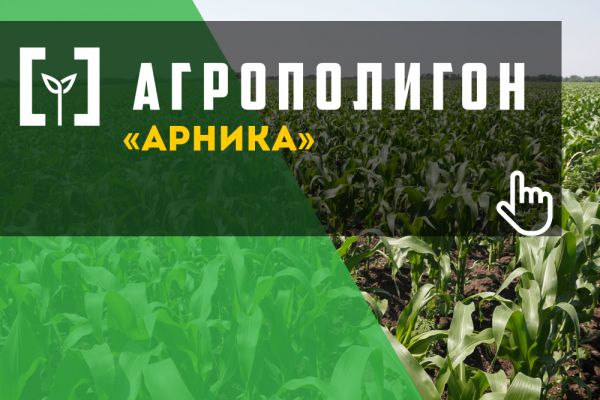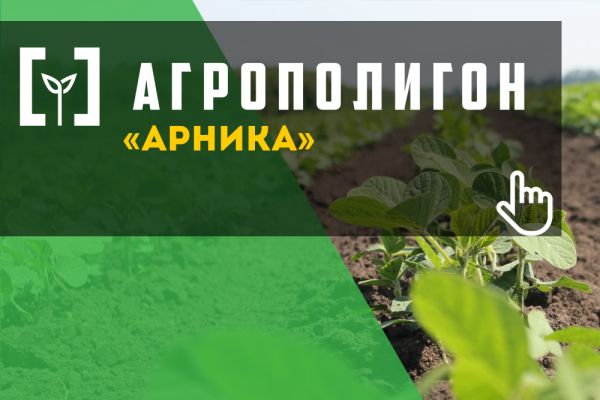AgroPoligon Arnika: Growing Organic Maize
Our team arrived in Hlobyne district of Poltava region on a sunny August morning, on the eve of Independence Day. Our visit took place within the AgroPoligon "field project", which is aimed to study the technology, applied by the Arnika agro-industrial group to grow organic maize, and also to evaluate the results and effectiveness of such technology. We were met by Sergey Sereda, the chief agronomist and Vladimir Ivanyuk, the leading specialist in organic farming, the CEO adviser.
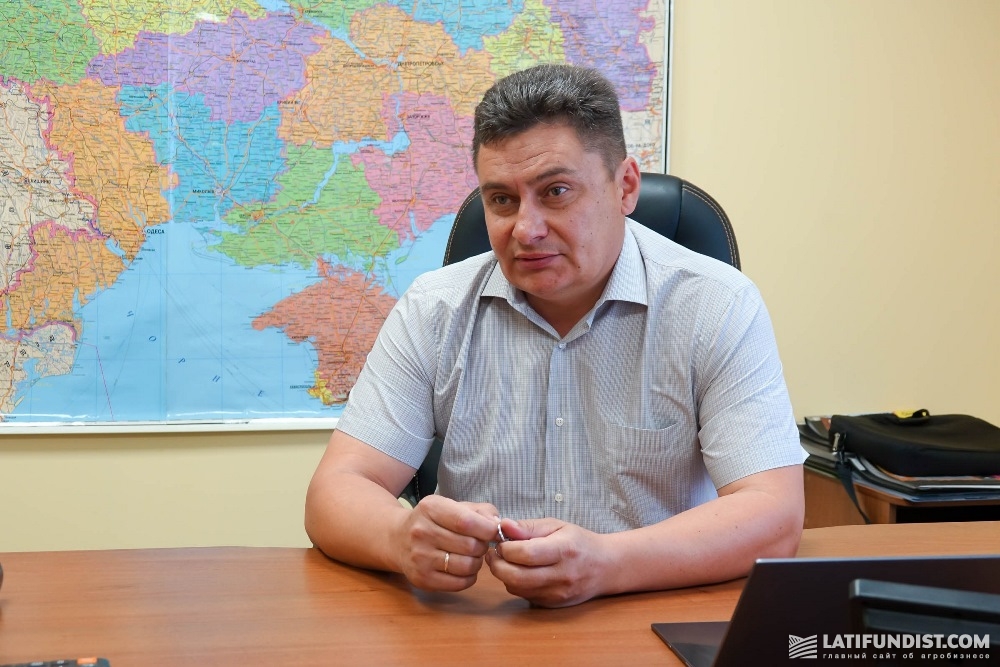
"Now we will go to the field and there we will examine maize growth and development. It is always better to show the result of the work first, at least preliminary," we were told almost immediately.
Arnika specialists do not really like long conversations and desk work, instead they prefer practical work in the fields. That is why we gladly went to inspect maize, which is grown in Arnika according to international organic standards, without artificial mineral fertilizers and pesticides.
"It has not been raining for almost a month, and during the vegetative period, rain precipitation was only a half of the norm. For instance, the monthly rate is 45-55 mm, but this summer there was no more than 30 mm in two or even three months. However, on our field you can see that there is still some moisture, plants do not suffer from "thirst" and heat as much as plants do on the neighboring fields that belong to other farms. You can easily distinguish our crops from others at first sight," comments Vladimir Ivanyuk.
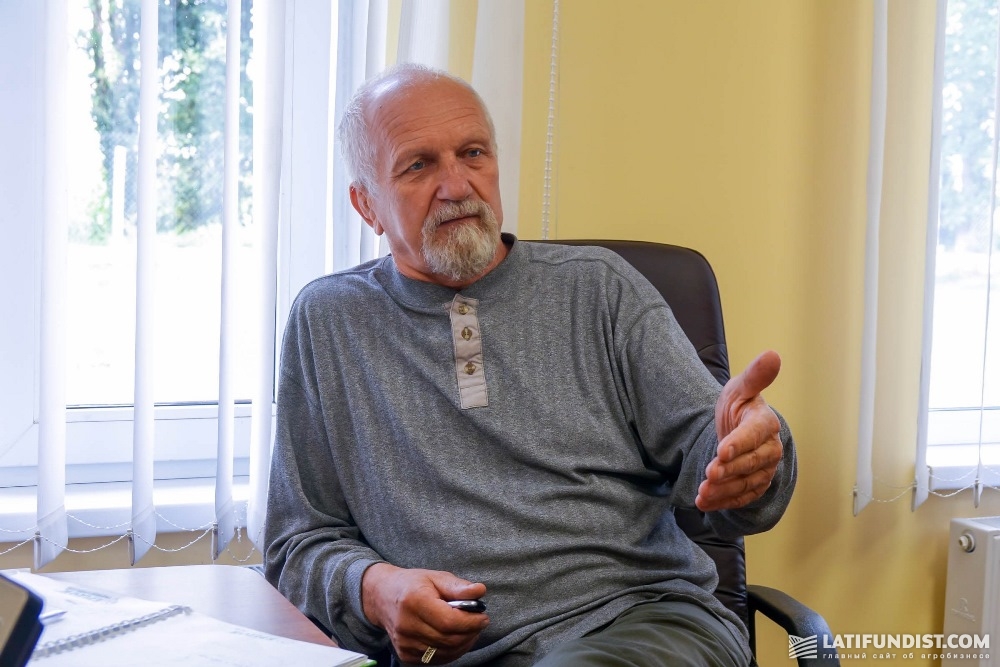
He is right: after a few minutes of field trip, we can more or less confidently say which of them belong to Arnika. On Arnika’s fields, maize is stronger, the leaves are well developed and not twisted from heat, the lower tiers are not drying out and there are large cobs on plants. Vladimir Ivanyuk says that such a state of plants is maintained thanks to the new system that was implemented in the farm this year.
"We provide plants with moisture taken from the air. Ovsinskiy's system was used as a basis for the technology, however it was modernized and adapted to one’s conditions. We also carefully selected equipment and planned all technological operations. The final result will be seen later when we sum up the results in winter. Though, the intermediate result can be observed now," he says.
About hybrids and cultivation
And here is the field where we will explore the technology of growing maize. This is the field of the Lan-Agro farm which is a part of the agro industrial group Arnika. Here the area of 114 hectares is sown with maize for grain, a hybrid of Dodix of RAGT breeding. The type of soils in a given locality and specifically in this field is black soil (chernozem).
"This is the mid-term hybrid with FAO 290, which was chosen for its high tolerance to drought and rapid moisture recovery ability. We generally sow about 80% of the RAGT selection hybrids, the remaining 20% are hybrids of DuPont Pioneer and KWS breeding. Why do RAGT hybrids prevail in the structure of maize crops? The reason is mainly marketing: we grow organic maize for the European consumer, and in Europe preference is given to European breeding. Therefore, the choice was made based on agronomic and marketing factors," explains Sergey Sereda.
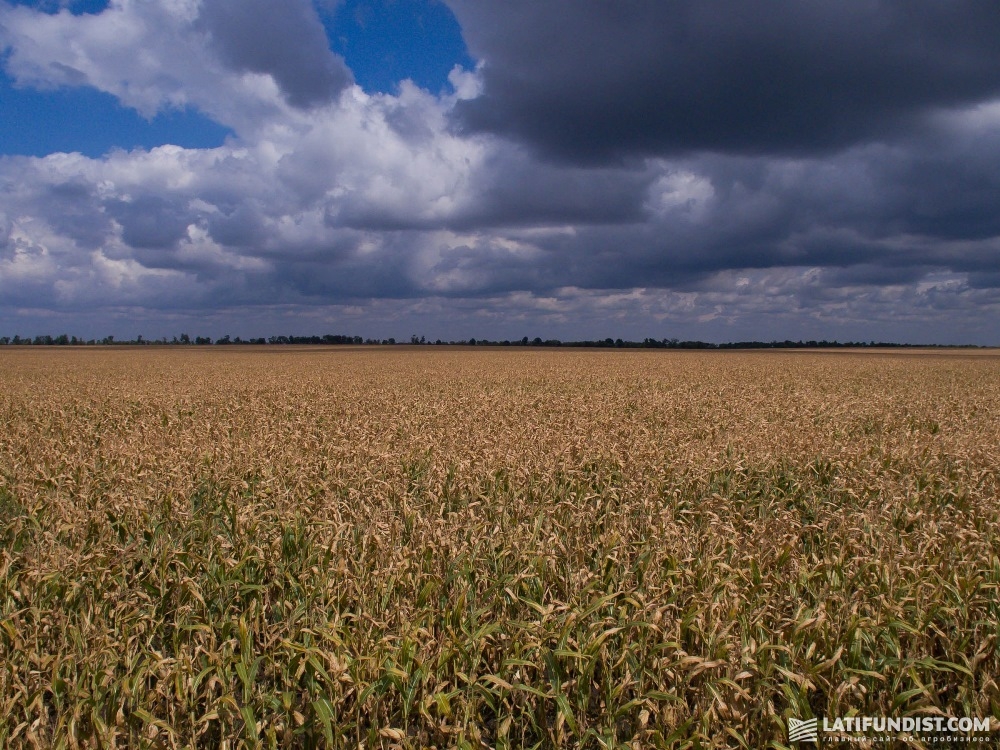
According to the chief agronomist, resistance to diseases also plays an important role when choosing maize hybrids, because organic production excludes the use of chemical means of protection. The Dodix hybrid is resistant to stem rot and corn smut, which is another argument in its favor.
Weather conditions this year were not favorable for maize. The crop was affected by cold April with frosts, then another frost in early May and the sudden heat that came just after cold spring. Here and there, they tell us, the maize is frozen, there were even fears that maize would not survive in some areas and would have to be re-sown. But crop survived, since the frosts did not hurt the point of growth, and besides, the agronomists kept an eye on the crops.
The predecessor for maize in this field was winter wheat.
Sowing campaign was conducted on April 27 with a seeding rate of 80 thousand seeds/ha. The density before harvesting is about 70 thousand/ha, as the seed producer recommends for the forest-steppe zone.
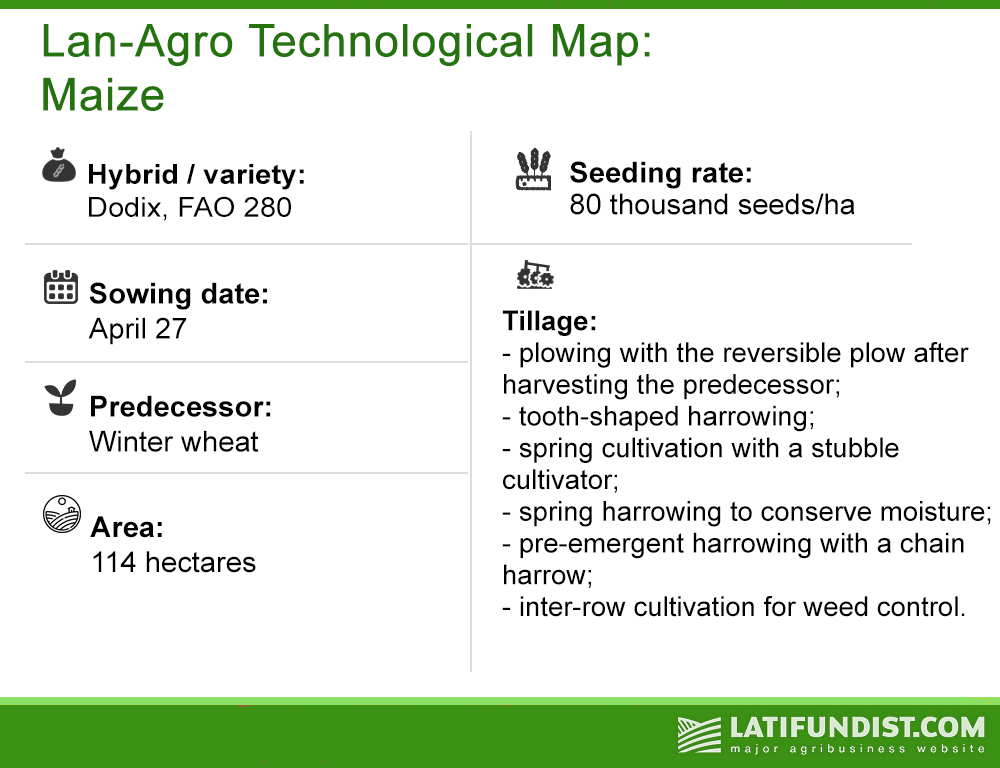
In organic farming, the main attention is paid to soil cultivation, because this is the only method for controlling weeds and improving the general condition of plants on the field. That is why usually there are a lot of technological operations planned:
- plowing with a reversible plow after harvesting the predecessor;
- tooth-shaped harrowing;
- spring cultivation with a stubble cultivator;
- spring harrowing to conserve moisture;
- pre-emergent harrowing with a chain harrow;
- inter-row cultivation to control weeds.
According to Sergey Sereda, harvesting on this field was scheduled for early September. The yield is expected to be 6-8 t/ha, as the year was very difficult in terms of climatic conditions. The frosts in April and May, which did not bypass the Hlobyne area, affected the development of plants, as well as heat and drought did, despite even the new system of farming.
Healthy plant does not require treatment
So, let us go and examine the field to find out how the growing technology worked out and how the plants "feel" today.
The first thing that catches your eye is strong high plants with mostly two productive maize ears. They are productive, well-filled, large, with 14-16 rows of grains. In some places, the second ear is smaller than the first one. But it is so rare to find the second ear on a plant in such a droughty year, so it can be considered a miracle.

The second thing we have noticed immediately: there is hardly a weed on the field. There are individual weed plants, but they do not compete with the crop — the field looks clean. And it is despite the fact that organic fields can often be identified by more significant weediness, as Sergey Sereda and Vladimir Ivanyuk affirm. Although in this case, everything is opposite: neighboring "traditional" fields are covered with weeds much more, which is noticeable even from afar.
"First of all, this is due to the well-planned and timely tillage. After all, this is our only opportunity to avoid contamination of crops," says Vladimir Ivanyuk.
We are curious, how they deal with diseases and pests. In some places, the plants are affected by diseases, but this is only at the edges of the field. The further we go, the healthier the maize looks. Here we did not notice a corn borer, which is a problem on every maize field. On the edges there were maize ears with slight damage, but, again, the deeper in the field, the less is the damage.
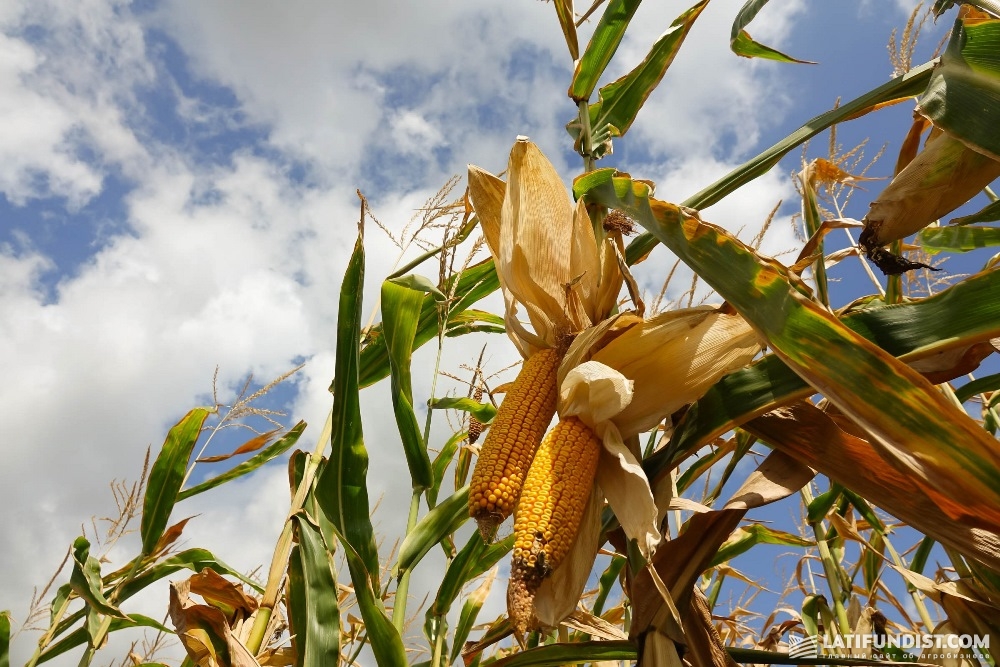
"A healthy plant, like a healthy person, does not require drugs and chemotherapy. So if, from the very beginning, the plant is provided with all the conditions for normal development, if seeds are selected correctly and the crop rotation is monitored, so that the infection does not accumulate, there will be no need for fungicides. This is not a panacea, and the diseases may occur somewhere. However, with a competent approach, the harmfulness of these diseases can be minimized," says Vladimir Ivanyuk.
Corn borer is not allowed!
As we were also surprised by the fact that there is no corn borer because Poltava region, this year especially, suffers from the caterpillars of this insect, we asked chief agronomist for explanations.
"And the explanation is simple: we cooperate with Cherkassy Biopreparat enterprise in the field of biological protection and they supply us with Trichogram. Three applications of the Trichogram by 1.5 times higher than the average recommended rate — that is our only secret. Biological protection is reliable, and at the same time it is completely safe for the plant," smiles Sergey Sereda.
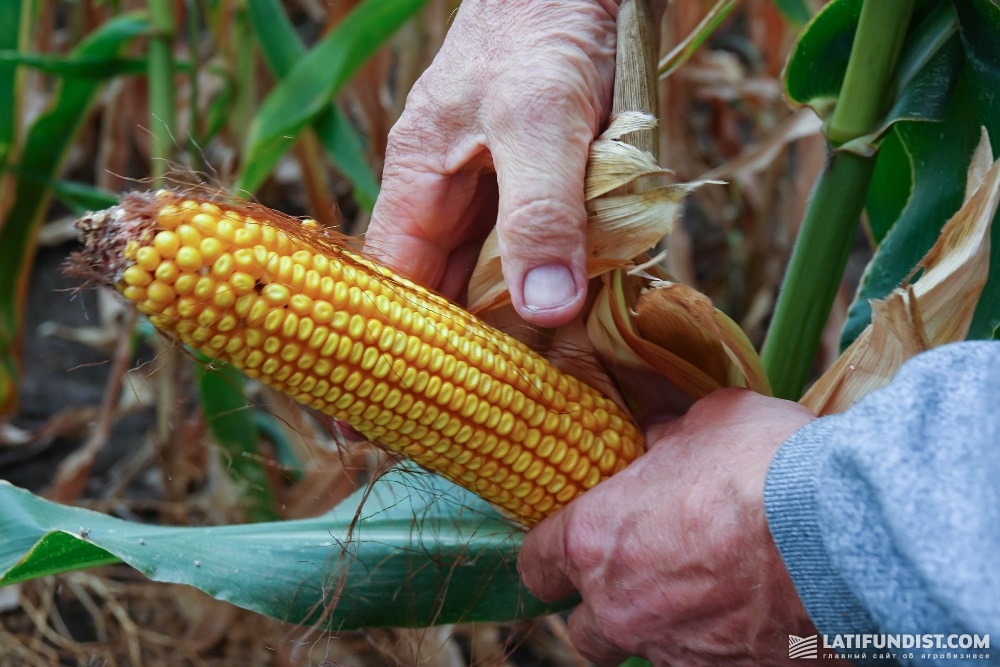
Of course, we immediately asked whether any biological preparations are used on the farm. The chief agronomist said that they do not use them massively, although experiments are carried out and experimental plots are being laid. But Arnika specialists have not yet found reliable and effective biological preparations, which would really give proven benefits. However, searches and experiments continue.
At the time of field inspection, the moisture content of maize grain was about 28-30%, this means that in dry weather harvesting will start as scheduled. After harvesting campaign, the field will be prepared for soy. We thanked the hospitable hosts for the interesting journey through the fields and valuable experience, but we did not hurry to say goodbye. After all, within the AgroPoligon project we will track the final results of growing maize, so we hope to return soon.
Elena Basanets, Latifundist.com


